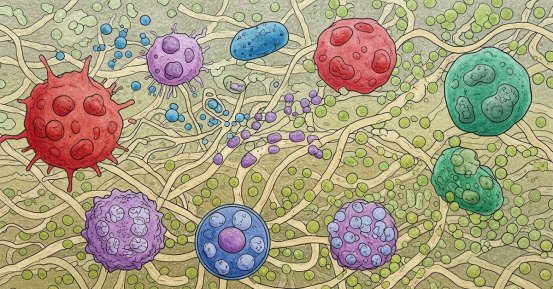UC San Diego-Led Study Predicts Novel Approach to Battling Influenza
SDSC’s ‘Comet’ Supercomputer Used to Create Detailed Flu Virus Simulations
Published Date
By:
- Kimberly Bruch
Share This:
Article Content
Every year, three to five million people around the world suffer from severe illness caused by influenza, primarily during the months of November through March. Now a new study by researchers from several universities including UC San Diego, published earlier this month in ACS Central Science, suggests a novel approach for combatting this sometimes deadly virus.
Although influenza has been studied for decades, the binding of the virus to host cells and its transmission remain a mystery. The new study, led by Rommie Amaro, a professor of chemistry and biochemistry and director of UC San Diego’s National Biomedical Computation Resource, and her colleagues at UC San Diego, UC Irvine, University of Pittsburgh, Point Loma Nazarene University, and the National Institutes of Health (NIH), suggest that the proteins may use a ‘secret’ site to help in the binding and cutting process.
A closer look at two glycoproteins on the influenza viral surface, neuraminidase (NA) and hemagglutinin (HA), allow for a better understanding of the fitness, transmissibility, infectivity, and virulence of the virus. While HA facilitates viral entry and NA promotes viral release, studies regarding the functional balance between these glycoproteins, in some instances, are not possible in experiments due to ethical concerns and the possibility of viral escape.
“Another way to think about these proteins is that they have to work together – one protein (HA) acts like glue to help the virus bind to cells, whereas the other protein (NA) is like a pair of scissors – it helps the virus release itself from cells,” explained Amaro. “If the virus sticks too much to the host cell, or if the scissors are too good, the virus itself cannot survive in the body. Understanding the balance between viral binding and release, or the functional balance of the two proteins, is an ongoing area of interest for flu because it’s believed to control how well the flu can transmit between people, and also how the virus may jump from pig to human, as it did in the 1918 and 2009 pandemic flu events.”
The new study suggests a novel pharmaceutical strategy of disrupting the balance between HA and NA activity by targeting the secret site on NA (also called the ‘secondary’ site) with small-molecule ligands or drugs. While inhibitors of NA cleavage will continue to be important, therapeutics targeting the NA secondary site may provide an alternate, potentially less strain-specific approach for combating new influenza variants.
In other words, targeting the secondary site presents a promising unexplored route for disrupting the HA/NA functional balance. This then paves the way for researchers to develop more effective influenza therapeutics.
Supercomputer Simulations at Record Resolution
Researchers used the Comet supercomputer at the San Diego Supercomputer (SDSC), an Organized Research Unit of UC San Diego, to create detailed physics-based simulations.
“We used Comet to develop a series of virtual models of the flu virus that we then interrogated with simulations to determine how the different flu viruses may interact with parts of the host cell,” said Amaro. “To build these highly detailed models, we had to combine several different kinds of data from different groups. We combined high-resolution X-ray crystallography structures with lower-resolution cryoelectron tomography data to create 3D virtual models of the flu virus at never-before-achieved resolution.”
The simulations provided insight into different structural features of the flu virus and how it interacts with molecules. For example, in some of the most virulent strains of the flu virus, Amaro and the research team found that the scissor protein (NA) is dramatically shortened, which allows for a better understanding of how the change in height affects the ability of the virus to bind to small molecules.
“To successfully run these detailed influenza simulations, we rewrote a substantial portion of necessary software to handle such a large molecular system,” said Lane Votapka, an assistant professor of chemistry at Point Loma Nazarene University. “We wanted to use Browndye (software) for the simulations we were doing (Brownian dynamics) and worked with Gary Huber, one of the authors on this paper and the main developer of Browndye. Together, we rewrote some of the Browndye computer code to handle these large systems.”
The study’s simulations represent a type of ‘computational assay’ that allows researchers to explore flu biology in ways that are not possible experimentally. New strains can be created, tested, and explored in silico in ways that otherwise would not be possible in the “wet” lab.
Support for this research was provided to Amaro under NIH grant NIH DP2 OD007237 and National Biomedical Computation Resource (NBCR) grant NIH P41 GM103426. This work was also supported in part by the Intramural Research Program of the National Institute of Arthritis and Musculoskeletal and Skin Diseases (NIAMS). Access to SDSC’s Comet supercomputer was provided through the National Science Foundation under award CHE060073N to Amaro.
Share This:
You May Also Like
Stay in the Know
Keep up with all the latest from UC San Diego. Subscribe to the newsletter today.



